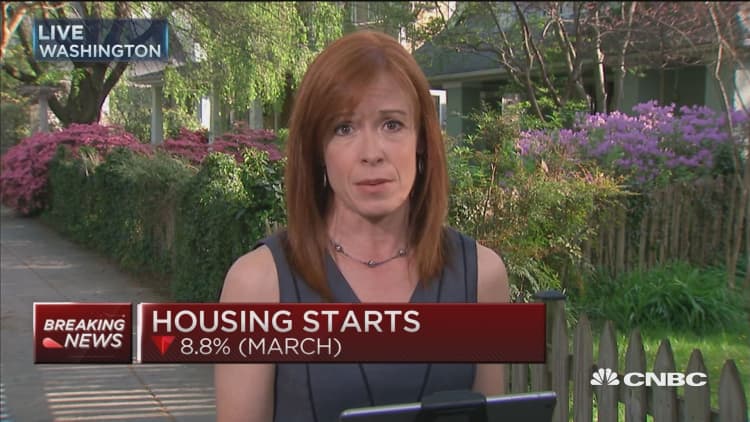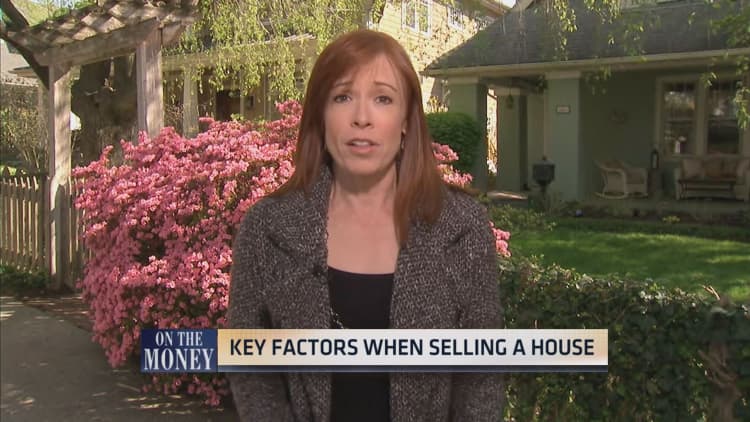


Home construction weakened in March, and homebuilder sentiment hasn't budged in three months — all this in the heart of the historically strong spring housing market. The common complaint from builders is that they are hamstrung by a lack of skilled labor, which is keeping production levels low.
That may have been a factor for the past several years, but today it is less and less a plausible excuse.
"Our analysis of payroll growth and wage inflation data suggests that labor shortages may not be to blame for the mediocre level of housing activity," Goldman Sachs analysts wrote in a report this week. "We find that, on the one hand, the construction sector has experienced the largest job growth over the past year."
Construction growth has led all other sectors at 5 percent, according to the Bureau of Labor Statistics, but average hourly earnings in construction gained only 2.2 percent over the past year, which is about the national average.
"Economics 101 would suggest that, if labor shortages did in fact exist, upward pressure on wages would be more pronounced and payroll growth would be anemic," the report said. "Therefore, the evidence from the industry-level employment and wage data does not support the existence of labor shortages in the construction sector."
Instead they point to delays in permit issuing and land scarcity. A survey of 100 builders nationwide by John Burns Real Estate Consulting backs that thesis. They asked about costs that didn't exist 10 years ago, and found high levels of builder frustration, not just from labor, but from cost overruns stemming from new regulations for house erosion control, energy codes and fire sprinklers. They also cited understaffed planning and permit offices as well as utility company delays.
"New regulations to protect the environment and to shore up local city finances have made it extremely difficult for home builders to build affordable homes," the Burns analysts wrote. "Now, more than ever, the demand for affordable entry-level housing will need to be met by the resale market, since new homes have become permanently more expensive to build. We were overwhelmed by the reply as well as the builders' level of frustration."
Builders are also seeing a shortage of buildable lots, as demand persists for land closest to urban areas. Those lots come at a premium, which makes it harder for builders to see profit on them. Development of infrastructure for land also slowed dramatically during the recession and is only now starting to ramp up again.
"Right now I'm not having a labor problem," said Stephen Paul, executive vice president of homebuilding operations at Maryland-based Mid-Atlantic Builders. "And we're having our best year in 10 years. I'm busy, but I don't want to hire because I'm afraid. We don't know if the market is sustainable. It's been 10 years and we're still looking for a serious recovery."
Paul said he is, however, suffering from a lot of plan changes. He said getting plans approved is a nightmare.
"When a builder has 25 changes or more, that's a lot of work to get the plans up to the new code," he said.
There is a labor crunch, though, in some parts of the country, more so in the West, as a considerable number of the construction workers who left during the recession still have yet to return.
The average age of a construction worker today is far higher than it was during the housing boom, Michelle Meyer, deputy head of U.S. economics at Bank of America Merrill Lynch Global Research, said Tuesday on CNBC's "Squawk Box." Builders need to attract younger workers, but they seem, so far at least, unwilling or unable to pay them more.




